Related Research Articles

Entomology is the scientific study of insects, a branch of zoology. In the past the term "insect" was vaguer, and historically the definition of entomology included the study of terrestrial animals in other arthropod groups or other phyla, such as arachnids, myriapods, earthworms, land snails, and slugs. This wider meaning may still be encountered in informal use.
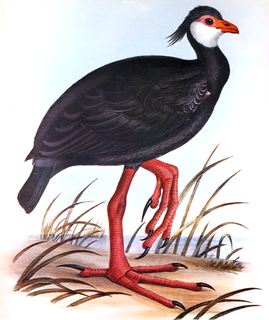
George Robert Gray FRS was an English zoologist and author, and head of the ornithological section of the British Museum, now the Natural History Museum, in London for forty-one years. He was the younger brother of the zoologist John Edward Gray and the son of the botanist Samuel Frederick Gray.

John Obadiah Westwood was an English entomologist and archaeologist also noted for his artistic talents.

William Kirby was an English entomologist, an original member of the Linnean Society and a Fellow of the Royal Society, as well as a country priest, making him an eminent parson-naturalist. He is considered the "founder of entomology".

Thomas Bainbrigge Fletcher was an English entomologist. Although an amateur lepidopterist who worked in the Royal Navy, he became an expert on "microlepidoptera" and was appointed as the second Imperial Entomologist in India to succeed Harold Maxwell Lefroy. Although only an amateur entomologist, he is credited with reorganizing entomological research in India by coordinating and directing research, efficient sharing of findings and a reduction in duplication of research work.

The Phoridae are a family of small, hump-backed flies resembling fruit flies. Phorid flies can often be identified by their escape habit of running rapidly across a surface rather than taking to the wing. This behaviour is a source of one of their alternate names, scuttle fly. Another vernacular name, coffin fly, refers to Conicera tibialis. About 4,000 species are known in 230 genera. The most well-known species is cosmopolitan Megaselia scalaris. At 0.4 mm in length, the world's smallest fly is the phorid Euryplatea nanaknihali.

Francis Walker was an English entomologist. He was one of the most prolific authors in entomology, and stirred controversy during his later life as his publications resulted in a huge number of junior synonyms.
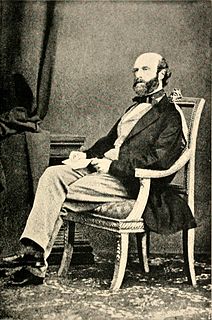
Alexander Henry Haliday was an Irish entomologist. He is primarily known for his work on Hymenoptera, Diptera, and Thysanoptera, but worked on all insect orders and on many aspects of entomology.
Robert McLachlan FRS was an English entomologist specializing in the study of lacewings (Neuroptera) and caddisflies (Trichoptera).
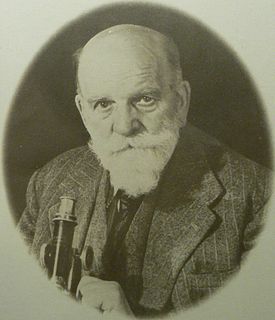
Heinrich Ernst Karl Jordan was a German-British entomologist.

Latridiidae is a family of tiny, little-known beetles commonly called minute brown scavenger beetles or fungus beetle. The number of described species currently stands at around 1050 in 29 genera but the number of species is undoubtedly much higher than this and increases each time a new estimate is made.
Ectopsocidae is a family of Psocoptera belonging to the suborder Psocomorpha. Members of the family are characterised by their absence of an areola postica in their wings, like in the family Peripsocidae. The family includes fewer than 200 species, most of them in the genus Ectopsocus.
George Thomas Bethune-Baker was an English entomologist who specialised in Lepidoptera, especially those in the family Lycaenidae of butterflies.
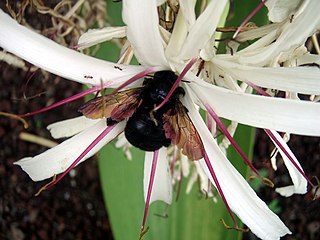
Xylocopa sonorina, the Hawaiian Carpenter Bee, is a carpenter bee found in the eastern Pacific islands. Males are golden brown and lack stingers; females are black and larger than the males and considered shy. In tropical climates, females will lay eggs all year, with interruptions due to cold weather. After collecting pollen and preparing tunneled chambers out of wood, a single female will deposit eggs on pollen balls within the chamber and seal it. The eggs will hatch two to three days later, with larvae maturing in two weeks, and prepupal and pupal stages lasting 3–4 weeks. New adults will begin buzzing a week later and flying in two to three more weeks.
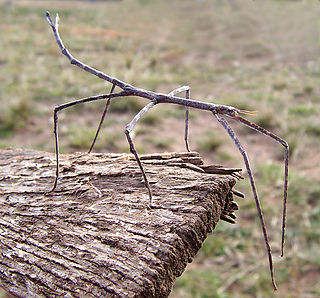
Ctenomorpha chronus, the margin-winged stick insect, is a species of stick insect endemic to southern Australia. The species was first described by George Robert Gray in 1833.

Systematic Entomology is a scientific journal covering the field of systematic entomology, published by the Royal Entomological Society of London. Having begun in 1932 as Proceedings of the Royal Entomological Society of London, Series B: Taxonomy, the title was changed to Journal of Entomology, Series B: Taxonomy in 1971, starting with volume 40. After volume 44 in 1976, the journal became Systematic Entomology, starting again with volume 1.

Compsilura concinnata is a parasitoid native to Europe that was introduced to North America in 1906 to control the population of an exotic forest, univoltine, gypsy moth named Lymantria dispar. It is an endoparasitoid of larvae and lives with its host for most of its life. Eventually the parasitoid ends up killing the host and occasionally eating it. It attacks over 200 host species, mainly insects from the Orders: Coleoptera, Lepidoptera and Hymenoptera. Since this parasite has the opportunity to attack many different types of hosts, the biological control has spilled over from the intended forest systems into other areas like agricultural fields affecting cabbage pests like the cabbage looper (Trichoplusia); the cabbage worm ; and even other invasive species such as the brown-tail moth, as well as native, non-pest insects.
Thomas Herbert Elliot Jackson was an English entomologist best known for his studies of African butterflies. He was a Fellow of the Royal Entomological Society of London

Sphaeroderma testaceum, the artichoke beetle, is a species of Chrysomelinae.

Mecodema dux is a medium-bodied New Zealand endemic ground beetle that is found in the Ruahine Ranges, Taupo, Rangitikei and southwestern Hawke's Bay entomological regions.
References
- 1 2 "The Transactions of the Royal Entomological Society of London". Royal Entomological Society of London. 1869: 48.
Emeopedus solutus.
Cite journal requires|journal=(help)
| This Acanthocinini article is a stub. You can help Wikipedia by expanding it. |